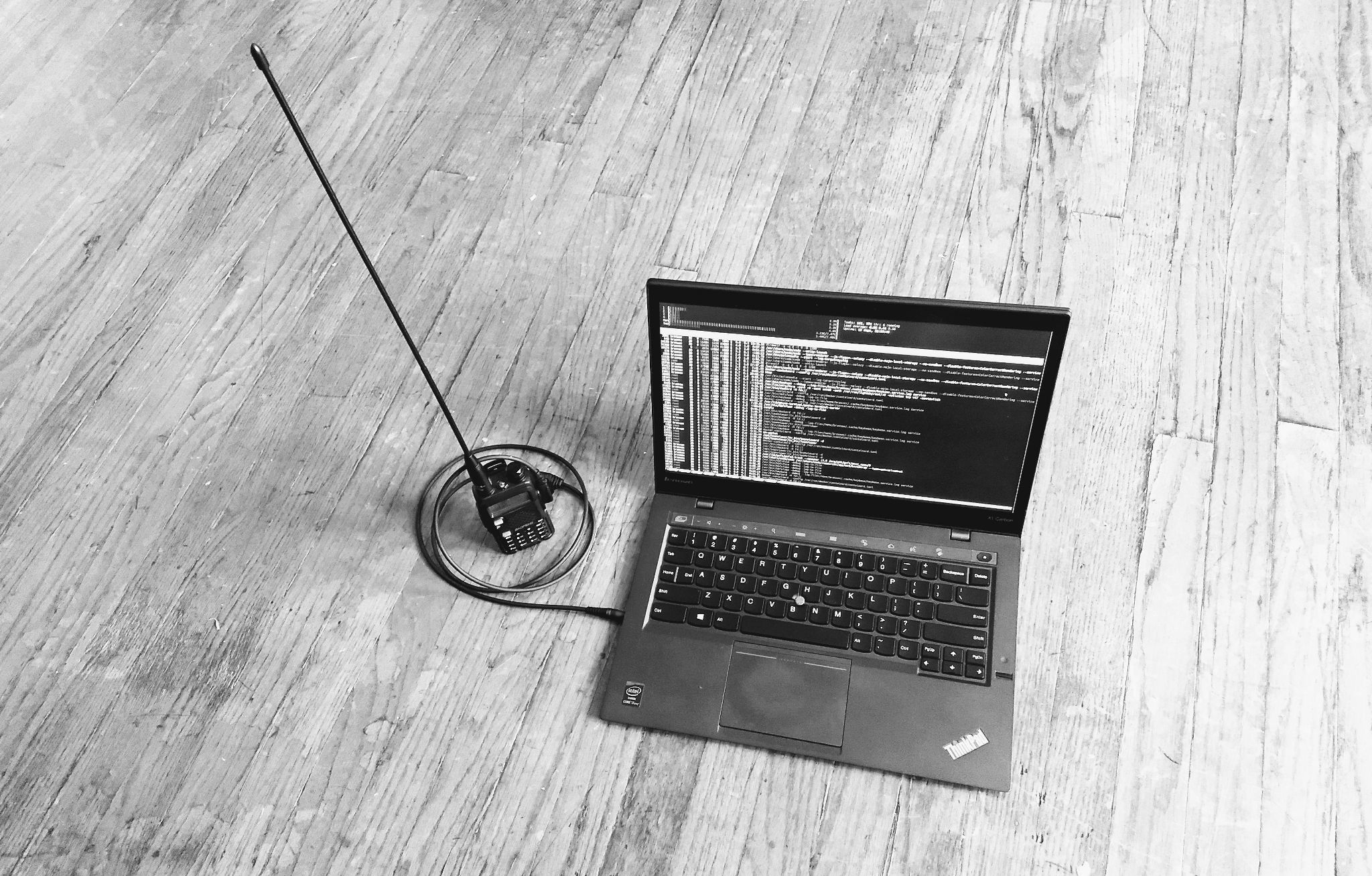An AX.25 packet radio chat protocol with support for digital signatures and binary compression. Like IRC over radio waves 📡.
Chattervox implements a minimal packet radio protocol on top of AX.25 that can be used with a terminal node controller (TNC) like Direwolf to transmit and receive digitally signed messages using audio frequency shift keying modulation (AFSK). In the United States, it's illegal to broadcast encrypted messages on amateur radio frequencies. Chattervox respects this law, while using elliptic curve cryptography and digital signatures to protect against message spoofing.
With amateur packet radio anyone can pretend to be anyone else. With Chattervox, you can be sure you're chatting with the person you intend to. For more information, check out the FAQ. Tutorial coming soon!
Chattervox requires a linux computer and a serial connection to a TNC to send and receive AX.25 packets. I recommend using Direwolf, a popular software TNC which can be run on the same computer hosting the chattervox application.
You'll also need a radio and a cable to connect the microphone and speaker from the radio to your linux machine. I recommend the following equipment, especially if you're on a budget:
- $24 Baofeng UV-5R 4-watt radio. This is the absolute best radio you can buy for that price.
- $18 BTech APRS cable (3.5mm TRRS to 3.5mm and 2.5mm audio cable)
You can also make the cable yourself if you prefer. Check out this zine for instructions.
Finally, to operate legally on amateur radio frequencies, you'll need an amateur radio license.
Binary downloads are available for Linux x64 and x86 architectures on the releases page.
If you have npm, that is the preferred method of install as it allows for the easiest upgrade to the latest version. If you prefer to "build" it from Typescript source and run it as a Node.js app, you can do that as well.
npm install --cli -g chattervox@latest # clone the repo
git clone https://github.com/brannondorsey/chattervox
cd chattervox
# download dependencies
npm install
# transpile the src/*.ts typescript files to build/*.js
npm run build
# run chattervox from source to opening the chat room
node build/main.js chat# open the chat room
chattervox chat
# generate a new public/private key pair, and use it as your default signing key
chattervox genkey --make-signing
# add a friend's public key to your keyring, so that chattervox can verify their messages
chattervox addkey KC3LZO 0489a1d94d700d6e45508d12a4eb9be93386b5b30feb2b4aa07836398781e3d444e04b54a6e01cf752e54ef423770c00a6
# remove a friend's public key if it has become compromised
chattervox removekey KC3LZO 0489a1d94d700d6e45508d12a4eb9be93386b5b30feb2b4aa07836398781e3d444e04b54a6e01cf752e54ef423770c00a6
# print all keys in your keyring
chattervox showkeyusage: chattervox [-h] [-v] [--config CONFIG]
{chat,showkey,addkey,removekey,genkey} ...
An AX.25 HAM radio chat protocol with support for digital signatures
and binary compression.
Optional arguments:
-h, --help Show this help message and exit.
-v, --version Show program's version number and exit.
--config CONFIG, -c CONFIG
Path to config file (default: ~/.chattervox/config.json)
subcommands:
{chat,showkey,addkey,removekey,genkey}
The chattervox packet is primitive and straightforward. It contains a simple header, an optional ECDSA digital signature, and a message payload that can be in plaintext or compressed. As of packet version 1, the protocol is connectionless. There is only one type of packet and there is no mechanism for delivery confirmation (think of it like UDP). It is expected to be transported via AX.25 Unnumbered Information (UI) packets, which the chattervox program relies on for sender and recipient information, as no such fields exists in the packet itself to conserve space.
The protocol may be amended in the future to add new features, however, its simplicity should not be seen as a weakness. The goal of chattervox is singular: Add cryptographic verifiability to text-based radio communication.
| Byte Offset | # of Bits | Name | Value | Description |
|---|---|---|---|---|
| 0x0000 | 16 | Magic Header | 0x7a39 | A constant two-byte value used to identify chattervox packets. |
| 0x0002 | 8 | Version Byte | Number | A protocol version number between 1-255. |
| 0x0003 | 6 | Unused Flag Bits | Null | Reserved for future use. |
| 0x0003 | 1 | Digital Signature Flag | Bit | A value of 1 indicates that the message contains a ECDSA digital signature. |
| 0x0003 | 1 | Compression Flag | Bit | A value of 1 indicates that the message payload is compressed. |
| [0x0004] | [8] | [Signature Length] | Number | The length in bytes of the digital signature. This field is only included if the Digital Signature Flag is set. |
| [0x0004 or 0x0005] | [0-2048] | [Digital Signature] | Bytes | The ECDSA digital signature created using a SHA256 hash of the message contents and the sender's private key. |
| 0x0004-0x104 | 0-∞ | Message | Bytes | The packet's UTF-8 message payload. If the Compression Flag is set the contents of this buffer is a raw DEFLATE buffer containing the UTF-8 message. |
[] indicates an optional field.
This repository serves as the first implementation of the protocol. The chattervox command-line tool acts as a client to send and receive chattervox packets in combination with a TNC. This implementation creates a new ECDSA keypair the first time it's run and includes a digital signature for each message (so long as there remains a signingKey in ~/.chattervox/config.json). Each message is temporarily compressed by the client before it's sent in an attempt to measure the efficiency of the DEFLATE compression algorithm. If the compressed version is smaller than the uncompressed version, the compressed buffer is used as the message payload and the compression bit is set in the chattervox packet. If the plaintext version is smaller, no compression is used and the original message text is used as the payload.
